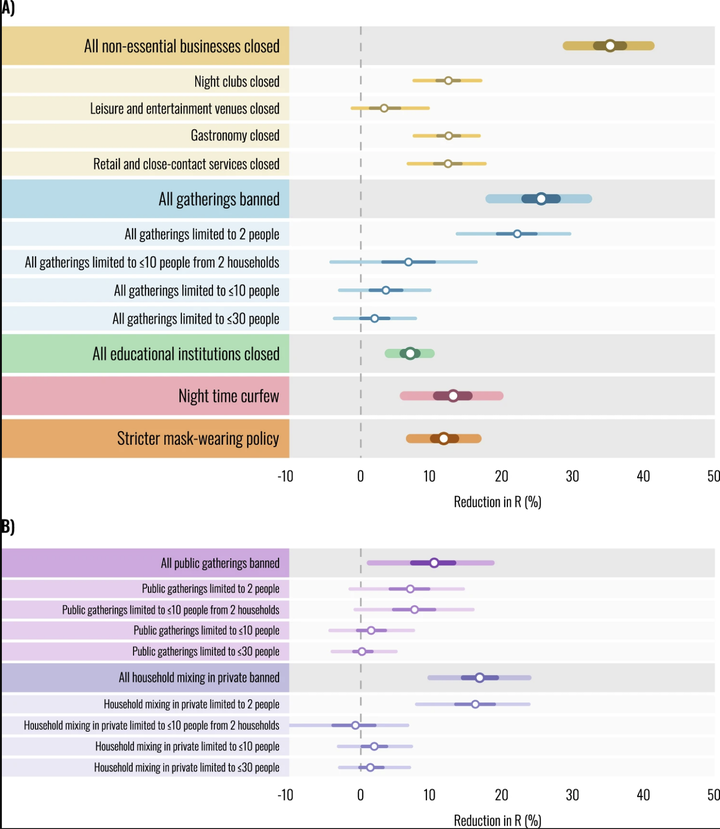Understanding the effectiveness of government interventions against the resurgence of COVID-19 in Europe

Abstract
European governments use non-pharmaceutical interventions (NPIs) to control resurging waves of COVID-19. However, they only have outdated estimates for how effective individual NPIs were in the first wave. We estimate the effectiveness of 17 NPIs in Europe’s second wave from subnational case and death data by introducing a flexible hierarchical Bayesian transmission model and collecting the largest dataset of NPI implementation dates across Europe. Business closures, educational institution closures, and gathering bans reduced transmission, but reduced it less than they did in the first wave. This difference is likely due to organisational safety measures and individual protective behaviours—such as distancing—which made various areas of public life safer and thereby reduced the effect of closing them. Specifically, we find smaller effects for closing educational institutions, suggesting that stringent safety measures made schools safer compared to the first wave. Second-wave estimates outperform previous estimates at predicting transmission in Europe’s third wave.